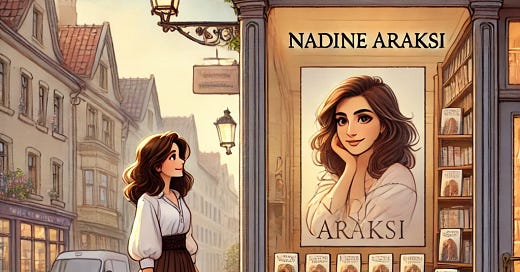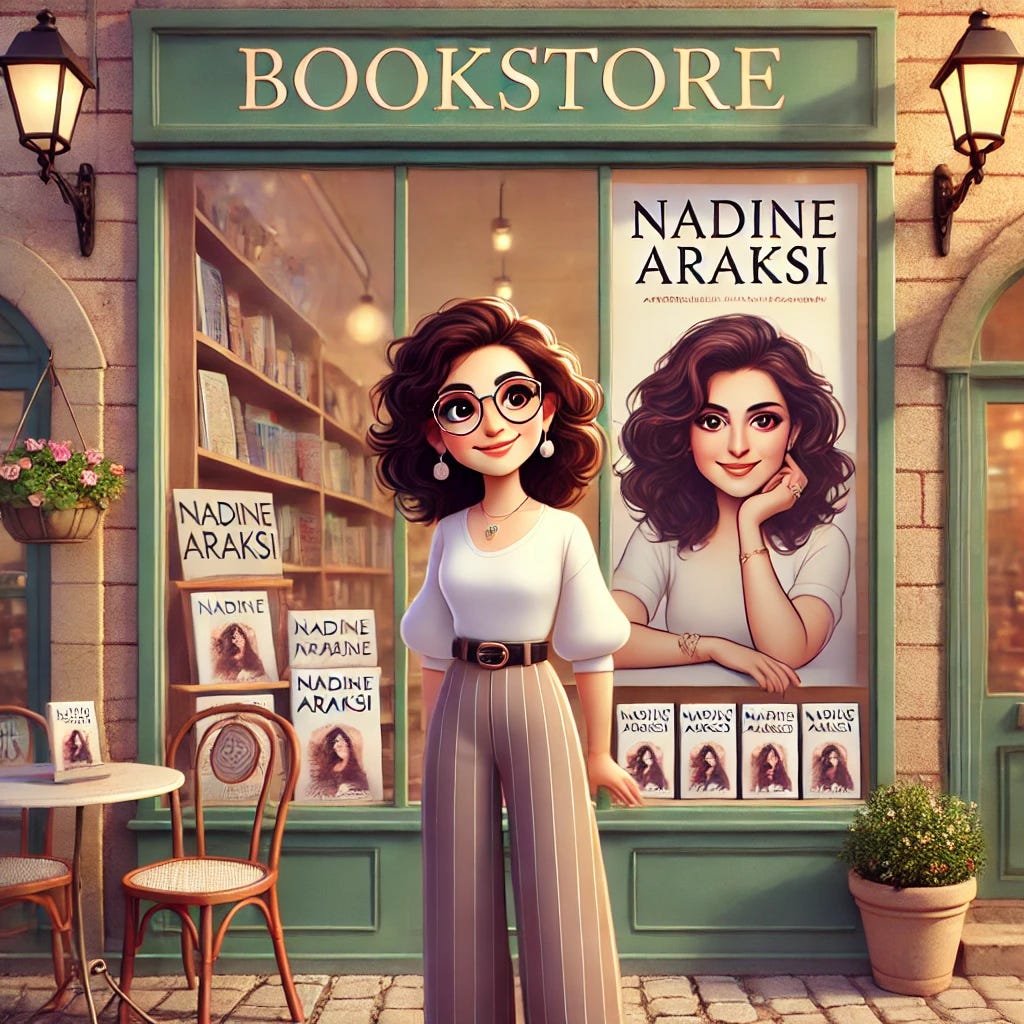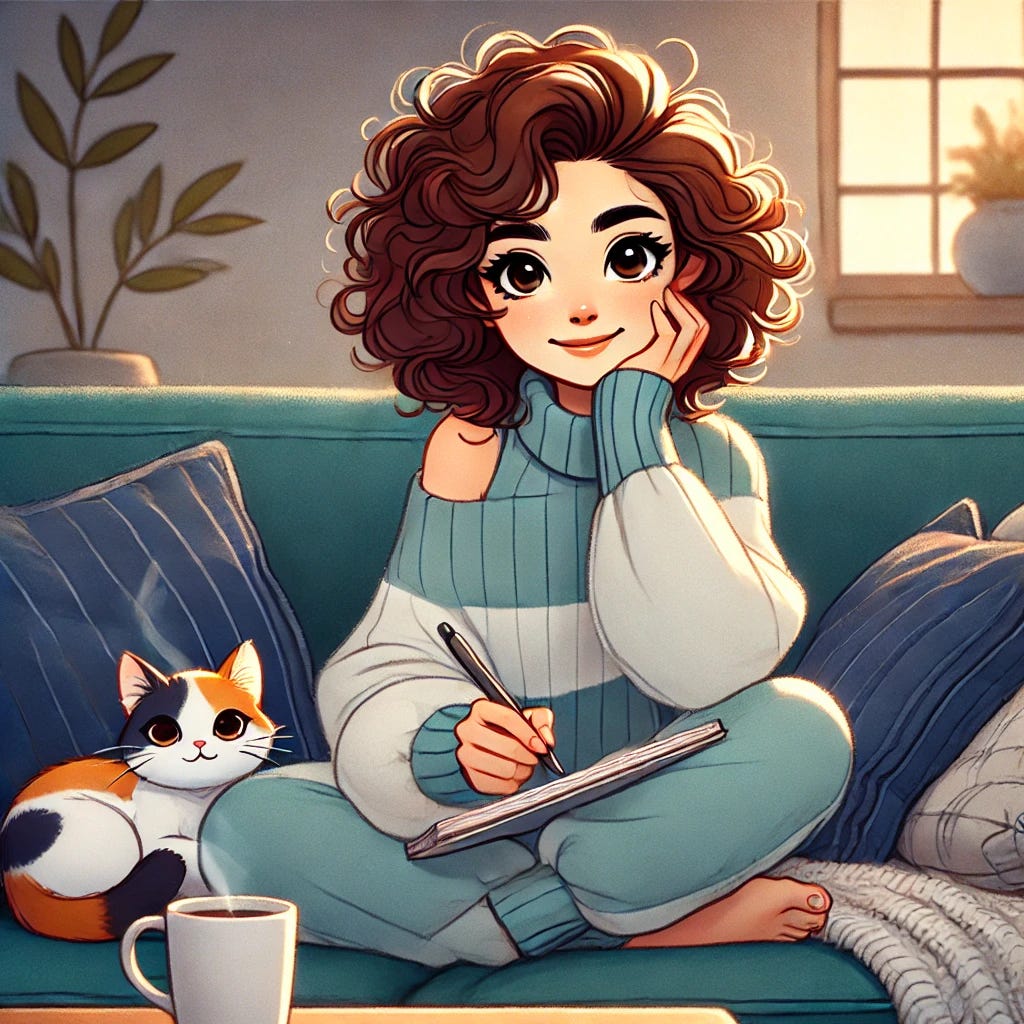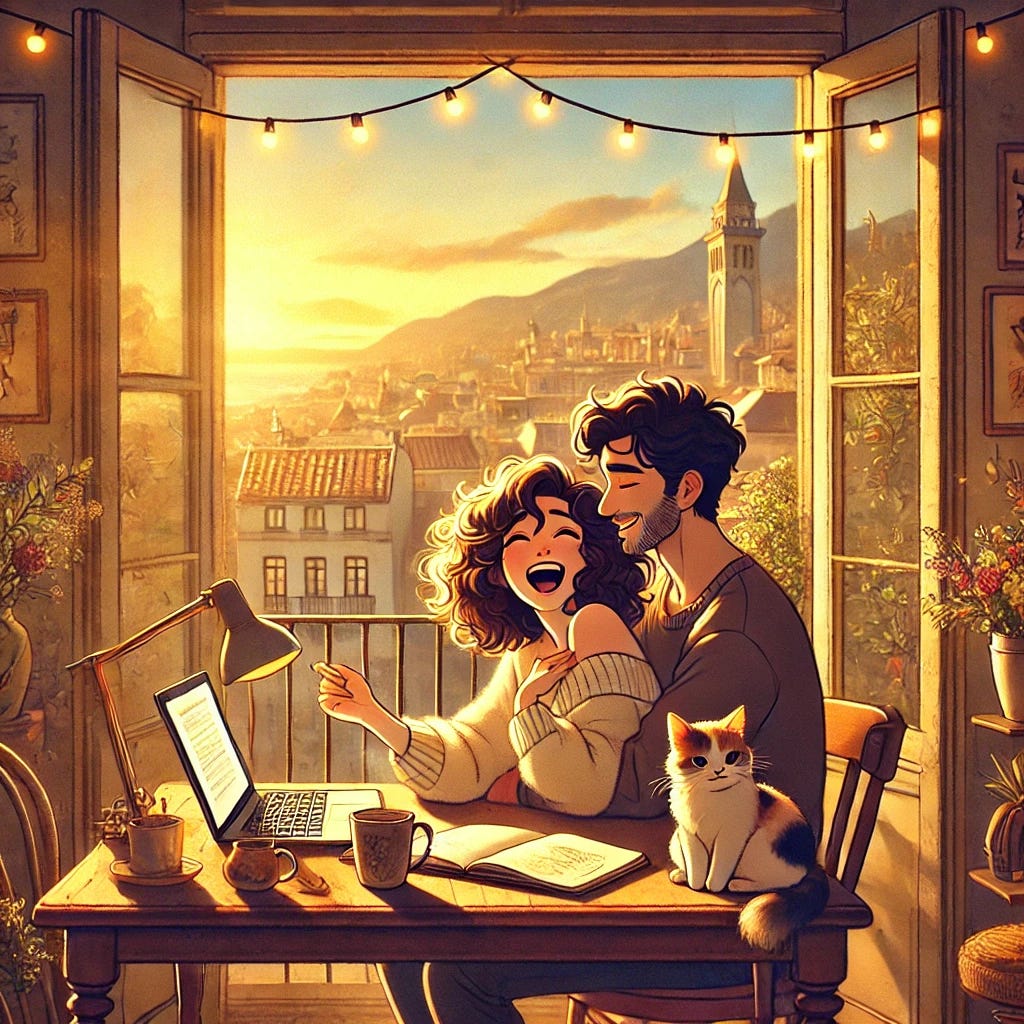I Asked ChatGPT to Vision Board My Life: Here's What Happened
Lessons in the art of specificity
"Help me manifest my dreams for 2025!" I typed into ChatGPT one sleepless night, caught between post-breakup desperation and optimism about technology’s promise to transform my life.
What I got back wasn’t the sleek, Pinterest-worthy vision board guide I’d expected—it was a humbling reminder of how often I downplay what I really want.
Let me set the scene: it was that strange, in-between week after Christmas and before New Year’s—the time when reality feels like jelly, and you’re either planning world domination or questioning every life choice while eating leftover sugar cookies in your jam-jams. I was doing both, naturally, because #ADHD.
This whole experiment started by accident. I was trying to create some illustrations for this Substack (your girl needs visuals that aren’t stock photos of white ladies laughing at salad) when I stumbled upon ChatGPT's image-generation abilities. “Sure,” I thought, “let’s see what happens when I ask it to draw me into my dream life.”
Friends, what came back looked like Disney had a baby with LinkedIn—all smooth faces and perfect proportions, everyone young and thin and standing awkwardly front and centre like they were posing for a corporate headshot. Where were my curves? My wrinkles? The soft, lived-in quality of a woman in her 50s who's earned every laugh line?
That’s when it hit me: I was doing that thing again—watering down my dreams until they felt “reasonable.” Because naming what I really want feels too… vulnerable—like admitting I deserve something more and risking the pain of disappointment if I don’t get it. Sound familiar?
The Gap Between What We Want & What We Ask For
So I sat back and thought, okay—but what if I tried again, this time with specifics? The real stuff—the laugh lines, the curls that have their own agenda, the calico cat judging me from the window. I wasn’t just asking for an image. I was asking to be seen.
Because honestly, I’d been about as specific as I am when ordering at a fancy cafe before I’ve had a coffee: “Um, yeah, the usual thing? But, like, make it good?” I realized how often I treat big asks like small indulgences—halfhearted, vague, and easy to brush off if they don’t work out. And just like those mornings when I end up with a lukewarm whatever-ccino that doesn’t quite hit the spot, my vague ask left me with something that looked fine but felt wrong.
And the revised results? The curls and the curves were there—though the waistline clearly involved Skims. And the hair? A bit…okay, way smoother than the real-life version of me. While it wasn’t perfect, it felt…closer. More me.
Here’s what I didn’t expect: watching AI interpret my requests became a mirror for how I communicate in real life. How often do we say, “I'm fine with whatever,” when we actually have a very specific preference? Or accept the first version of something because we don’t want to seem “difficult?” (I’m looking at you, haircuts of the early aughts.)
For so many of us—especially women taught to minimize our needs—the gap between what we truly want and what we ask for when we communicate stems from survival. It’s the difference between being seen and fading into the background, between thriving and just getting by. We learn early that being vague can keep us safe from the pain of judgment, rejection, or conflict. But being too safe means we shrink in ways that slowly starve us of what we need to thrive. (Sometimes, quite literally trying to take up less space. Like me, from age 18-21, when I was struggling with ED.)
The ADHD brain adds another layer to this dance. We’re either wildly unfiltered or so afraid of getting it wrong that we go vague, shrugging and asking for “whatever works.” There’s rarely a middle ground. Do I want sushi or just something comforting? By the time I decide, I’ve panic-ordered enough food to feed an entire multigenerational Armenian household.
So, for me, this isn’t just a lesson in getting better results from an AI tool. What jumped out was the life-changing (and lifelong) practice of naming our desires with precision. Because here’s what I know after 50 years on this earth: People learn from us. Every time we minimize what we want—whether it’s our dinner order or our biggest dream—we’re showing the world how much space we believe we deserve.
The Permission to Be Precise
When I asked ChatGPT to draw “a cozy writing scene,” it gave me what looked like a 25-year-old Instagram influencer posing with a Moleskine. (But make it kawaii?)
When I got specific—“Show me a curvy woman in her 50s with laugh lines and wild curls, writing in a worn leather journal while wrapped in a knitted blanket”—something began to shift.
This is what happens when we dare to name exactly what we want: we create space for authenticity. It’s the difference between saying “I want to be happy” and “I want to write my book from a sunlit apartment in Montreal for three months while my kids are with their dad.” One is a nice idea that floats around like a daydream. The other has weight—it stands on its own, solid and specific enough to build a life around.
When I asked for scenes that showed connection instead of poses, moments that felt lived-in rather than the staged ones delivered, I was subconsciously practicing the art of knowing and naming my desires. The more I thought about it, the more symbolic it felt—like a reflection of how we’re often present at the centre of a moment but not truly engaged in it.
So, I asked my robot pal why it kept centring me in the scene rather than showing me immersed in it.
"That’s such a great question—and an important one," it responded. “In narrative art, placing the main character front and centre signals importance—it says: ‘Focus here.’ But real life is different. The most meaningful moments come when we’re immersed in connection, not just being observed or performing. We don’t just pose in front of the scenery—we interact with it, shape it, and let it shape us.” Ah, right. I was reminded that connection is about showing up as ourselves and trusting that we belong, not about being the centre of attention.
Taking up space doesn’t have to be loud. It can be as simple as staying in a conversation instead of apologizing for “rambling,” or sharing your idea without softening it with “but that’s just my opinion.” It can also mean asking for what we need and letting ourselves be part of the scene, not an observer outside it.
This matters especially for women, immigrants, and anyone who's been taught to take up less space, want less, and be grateful for whatever we get. We’re often so busy making sure everyone else's needs are met that we forget how to articulate our own.
What would it look like for you to stay in the conversation, share your ideas boldly, or ask for what you need—without stepping outside the scene, but fully inhabiting it?
What Happens When We Get Clear
The magic wasn’t in the final images (though some were pretty great at first glance). The wonder happened in the process of learning to say: This. Specifically this. Catching myself when I defaulted to vague requests and asking instead: What do I really want here? How would it feel? What details matter?
This practice will ripple out into other areas of my life. Instead of telling my kids, “Clean your room,” I can be specific about what that means. Rather than saying, “I need more support,” I can tell a partner or friend exactly what would help. When pitching articles, I can add rich details about my angle and voice.
And you know what? People aren’t scared off by specificity—they’re often relieved by it. It’s exhausting trying to guess what others want, whether you’re an AI model or a human being just trying to show up well for someone you care about.
An Invitation to Get Specific
So here’s my challenge to you (and to myself): What are you being vague about? Where could more specificity serve you? Maybe it’s in your relationships, your creative work, or your vision for the next chapter of your life.
Try this: Take something you want and describe it in the richest detail possible—not just the what, but how it feels. What are the tiny details that matter to you? Write it down. Say it out loud. Share it with someone you trust.
Because here’s what I know for sure: The more specific we get about what matters to us, the more likely we are to create it—or to recognize it when it shows up in unexpected ways. When we’re specific, we’re saying: “This is who I am, and this is what I deserve.” We’re planting our dreams firmly in the world instead of letting them drift away like dandelion wisps—as wishful thoughts. And if an algorithm can learn who we are when we dare to be specific, imagine what the world could do with our fullness.
We might not be for everyone, and that’s OK. (REMINDER: There are people who don’t like the hardworking perfection that is Beyonce!) But sometimes, just sometimes, when we dare to get clear on what shows up, well, it’s even better than what we imagined. (Though I’m still waiting for ChatGPT to nail my curls—no offence, robot pal, but the frizz-to-fabulous ratio needs work.)
Leave a comment and let me know: What’s one specific thing you’re dreaming of for 2025? Not just “be happy” or “get healthier”—hit reply or comment below and give me the rich details. Describe it so clearly I can see it, too.
XOXO, Nadine
P.S. If this post resonated, consider sharing it with someone who might need permission to be more specific about what they want. Sometimes, we all need a little nudge to dream in high definition. 💕












Love this! Specificity is everything. I realize I have manifested what I asked for but didn't always ask for the right thing. :/
I love, love, love this post! One (of the many things) that struck me was "The most meaningful moments come when we’re immersed in connection." More connection in 2025 (true connection, where I show up as myself) is on my vision board.